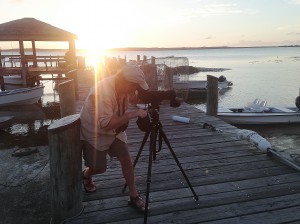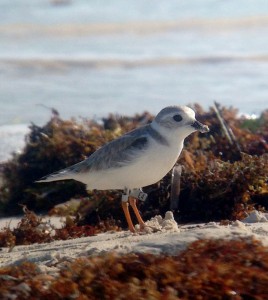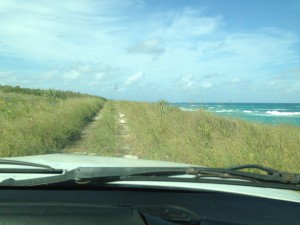In Search Of Piping Plovers On Eleuthera
CWF RESEARCHERS EXPAND SURVEYS TO ANOTHER ISLAND IN THE BAHAMAS
By Todd Pover, Beach Nesting Bird Project Manager and Stephanie Egger, Wildlife Biologist

Our experience so far this week in Eleuthera is a reminder why we do so much pre-trip “recon” for our Bahamas Piping Plover Project. Prior to the trip, we poured over Google Earth maps to try to identify the most suitable habitat for plovers. We read (and reread) the report from the 2011 International Piping Plover Census, the last time any significant surveys were conducted here. Finally, we “huddled” with our partners from Monmouth University so they could help us with logistics, as they have a history of marine-based research here.
Without this preparation we would have been ill prepared, of course, but we still faced many challenges right out of the gate. First and foremost, Eleuthera is more than 100 miles long, with two coasts, so covering even a small portion of the island is difficult in a short period of time. Once we decided which sites were the top priority, we quickly found out that reaching those locations is difficult. There are few official signs to the shoreline on the Atlantic side along the one main “highway”, and many of the “roads” are difficult to traverse, even with a 4WD. A number of turnoffs ended as dead ends or too overgrown to continue.

It also quickly became apparent that Eleuthera’s rocky coast, especially along the western side is not nearly as suitable for piping plovers as we had experienced on earlier trips to Abaco and Grand Bahama. And some of the beaches on the Atlantic side were too narrow to likely support piping plovers. Not surprisingly, the initial day of surveys ended with a lot of lessons learned, but NO piping plovers.
Day Two we took an entirely different tack. We left our vehicle on the mainland and headed out on small ferries to two islands off the northern coast of Eleuthera; Spanish Wells, a residential community with a commercial lobster port and Harbor Island, a resort town known for its famous Pink Sands Beach. Our luck turned around, as we observed 20 piping plovers (with relative ease) including four that were marked with engraved flags that denoted they were Canadian breeders. This was one of the highlights of all our Bahamas trips to date.
We were also able to track the movement of 18 plovers from a high tide roost on the ocean side beach to a low tide flat on the other side of the island as the sun set. From what we learned on Abaco on previous trips to the Bahamas, this type of information is some of the most critical we can collect to help inform future surveys. We definitely earned our celebratory Kaliks that evening!

Our goals for the surveys this week are modest. We are trying to confirm some of the site information our colleagues Pat and Doris Leary gathered during the 2011 International Census, as well as add some additional sites to the survey inventory. We also are trying to visit high value sites, such as Savannah Sound, to determine which tide or portion of the tide is most productive for the surveys. With this information in hand, we hope to do our small part to help make the 2016 International Census next winter the most productive and accurate to date.